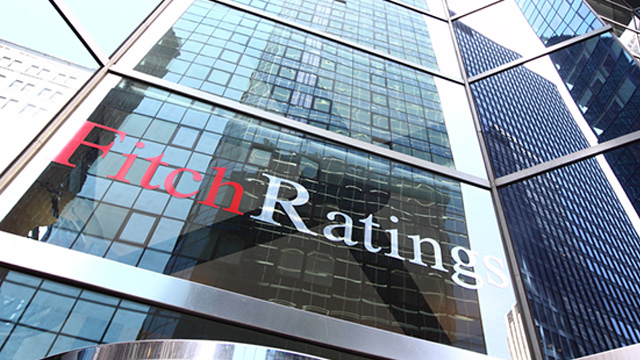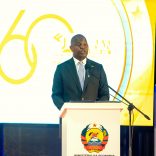Mozambique: Physical cash in circulation increases by 6.5% in last 12 months
Fitch affirms Mozambique at ‘CCC’

File photo: Lusa
Fitch Ratings has affirmed Mozambique’s Long-Term Foreign-Currency Issuer Default Rating (IDR) at ‘CCC’.
Key rating drivers
The ‘CCC’ rating reflects limited financing options combined with high fiscal and external financing needs that have been exacerbated by the coronavirus shock, high general government (GG) debt and ongoing unresolved public-sector debt liabilities.
Fitch expects real GDP to contract by 1% in 2020, after muted GDP growth in 2019 of 2.2% due to the damage caused by two cyclones. The projected contraction reflects our expectation that moderate growth in the agricultural sector will have only partially offset weak performance in the extractive sector, affected by lower prices and demand for Mozambique’s mining exports. Moreover, the coronavirus pandemic is affecting the tourism sector, and containment measures are having an adverse impact on domestic demand, as in other countries in the region.
We expect a gradual economic recovery in 2021, with growth picking up to 2.8% and 3.3% in 2022. Under our baseline, persisting financing constraints affecting both the government and the private sector, as well as disruptions from mounting security tensions across the country will weigh on economic activity. The resumption of infrastructure projects that were delayed this year could boost growth next year above our baseline, although uncertainty remains around the timeframe for their implementation.
Fitch forecasts the fiscal deficit on a cash basis to widen to 7.2% of GDP in 2020 from 0.5% in 2019, when revenues were boosted by a one-off 6% of GDP capital gains tax payment due to a large gas transaction. Increased grant flows of 4.1% of GDP in 2020 will partially offset the hit to tax revenues and higher spending pressures stemming from the coronavirus shock, post-cyclone reconstruction needs and security concerns.
Under our baseline, fiscal consolidation will be gradual after the coronavirus shock subsides, with the deficit on a cash basis narrowing only slightly to 6.5% of GDP in 2021 and 6.3% in 2022. Cuts to current and capital expenditure will offset mounting spending pressures stemming from security concerns and reconstruction needs. In addition, we expect tax collections to return to pre-pandemic levels only gradually, while grant flows are set to decrease over the projection period.
The wider fiscal deficit in 2020 has aggravated an already tight financing picture. Apart from the IMF through its Rapid Credit Facility, official creditors have not resumed direct budget support loans, halted since the revelations of previously undisclosed public debt in 2016, although they have provided grants to the country. Fitch expects the government to have met its financing needs (11.4% of GDP) with official project loans, the IMF’s emergency funding (2.2% of GDP), domestic issuances and participation in the Debt Service Suspension Initiative (DSSI). The authorities are still finalising agreements related to the DSSI and the total amount remains unclear, but preliminary estimates lead Fitch to believe the ultimate relief will not be sizeable.
Funding challenges will persist in 2021. Commitments from official creditors to expand forms of direct budget funding remain uncertain, in Fitch’s view. The authorities have expressed their interest in beginning discussions with the IMF on a new medium-term programme, which could help ease financing conditions, but little progress appears to have been made thus far. The authorities are likely to take advantage of an offer from creditors to extend the DSSI in 2021, although Fitch does not expect relief to be sizeable. Moreover, the government is likely to face difficulty in accessing international capital markets and the domestic financing market is shallow.
The status of the two loans with purported state-guarantees to the two former state-owned enterprises (SOEs), Proindicus and MAM, remains uncertain. The two companies have now been dissolved under local law. Since 2016, the SOEs have not made principal or interest payments on their respective loans, with an outstanding amount of USD1 billion and arrears estimated at around USD1 billion by the IMF, totaling around 13% of GDP in 2019 according to our calculations. The government has challenged the validity of both guarantees through legal disputes in the English courts. The uncertainty surrounding these obligations means that Fitch cannot currently deem the sovereign guarantees to be unequivocal, irrevocable and unconditional, and the missed payments therefore do not constitute a default under our criteria.
We project GG debt to rise to 120% of GDP in 2020 from 94% of GDP in 2019, due to high financing needs and the metical’s depreciation (86% of GG debt is denominated in foreign currency), and then decline to 115% in 2022. Our debt estimates include the liabilities of Proindicus and MAM, given the possibility they may crystallise on the sovereigns’ balance sheet depending on the outcome of the legal proceedings. The government is discussing possible debt restructuring beyond the DSSI with some official bilateral creditors. Fitch understands that the authorities do not intend to include market debt in the sovereign’s debt restructuring and relief negotiations.
The coming on stream of the first of several large LNG projects currently planned for 2023 (total investment of around 415% of 2020 GDP), is likely to be delayed. As a result, capital and intermediate goods imports have been lower than initially forecast in 2020. The delay appears due to the postponement of Exxon Mobil’s final investment decision of USD30 billion (215% of 2020 GDP) previously expected in 2020, disruptions to global supply chains and mounting security risks causing operational difficulties. The projects should eventually have significant positive effects on Mozambique’s medium-term growth, although fiscal benefits will accrue well after production commences.
We project the current account deficit (CAD) to deteriorate to 33% of GDP in 2020 from 20% in 2019, due depressed coal exports and higher megaproject-related imports – albeit at considerably lower levels than previously expected. We project the CAD to widen to 49% in 2021 and 65% in 2022 as the megaproject imports intensify. Private loans and FDI related to the megaprojects, coupled with government and bank borrowing, should cover the bulk of external financing needs in 2020.
The depreciation of the metical by 17% against the US dollar since the beginning of year has absorbed most of the external shock, and the currency flexibility has protected international reserves, which have held up, at USD3.9 billion as of end-September 2020 compared with USD3.8 billion at end-2019.
Political risks are rising. The conflict in the gas-rich northern province of Cabo Delgado has escalated since the beginning of the year, leading to population displacements, operational difficulties for the energy companies and heightened security spending. In parallel, a splinter group of the main opposition party, Renamo, is challenging its leadership and carrying out attacks across the country, hampering the disarmament process envisaged in the peace agreement signed in August 2019 between Renamo and the ruling party Frelimo.
ESG – Governance: Mozambique has an ESG Relevance Score of ‘5’ for both Political Stability and Rights and for the Rule of Law, Institutional and Regulatory Quality and Control of Corruption, as is the case for all sovereigns. These scores reflect the high weight that World Bank Governance Indicators (WBGI) has in our proprietary Sovereign Rating Model. Mozambique has a low WBGI ranking at the 22th percentile, reflecting institutional weakness and governance shortcomings, as illustrated, for example, by the revelation in 2016 of hidden debt.
Rating sensitivities
Factors that could, individually or collectively, lead to positive rating action/upgrade:
– Public Finances: Sustained easing of financing constrains, for example from an agreement on a medium-term IMF programme and wider official creditor support.
– Public Finances: A substantial decline in the public debt-to-GDP ratio, for instance as a result of a sustained reduction of financing needs or favourable court decisions for Mozambique on SOE debt obligations.
– Macroeconomics: Higher confidence in medium-term growth prospects, through the timely coming on stream of the LNG megaprojects.
Factors that could, individually or collectively, lead to negative rating action/downgrade:
– Increased likelihood of a probable default event or restructuring of sovereign market debt instruments.
Best/Worst case rating scenario
International scale credit ratings of Sovereigns, Public Finance and Infrastructure issuers have a best-case rating upgrade scenario (defined as the 99th percentile of rating transitions, measured in a positive direction) of three notches over a three-year rating horizon; and a worst-case rating downgrade scenario (defined as the 99th percentile of rating transitions, measured in a negative direction) of three notches over three years. The complete span of best- and worst-case scenario credit ratings for all rating categories ranges from ‘AAA’ to ‘D’. Best- and worst-case scenario credit ratings are based on historical performance. For more information about the methodology used to determine sector-specific best- and worst-case scenario credit ratings, visit [https://www.fitchratings.com/site/re/10111579].
Key assumptions
We expect global economic trends to develop as outlined in Fitch’s most recent Global Economic Outlook published in December 2020.
References for substantially material source cited as key driver of rating
The principal sources of information used in the analysis are described in the Applicable Criteria.
ESG considerations
Mozambique has an ESG Relevance Score of 5 for Political Stability and Rights, as World Bank Governance Indicators have the highest weight in Fitch’s SRM and are therefore highly relevant to the rating and a key rating driver with a high weight.
Mozambique has an ESG Relevance Score of 5 for Rule of Law, Institutional and Regulatory Quality and Control of Corruption, as World Bank Governance Indicators have the highest weight in the SRM and are therefore highly relevant to the rating and a key rating driver with a high weigh.
Mozambique has an ESG Relevance Score of 4 for Creditor Rights as willingness to service and repay debt is relevant to the rating and is a rating driver. Mozambique cured the protracted default in 2019, and ongoing litigation surrounding unresolved public-sector liabilities still dents a full normalisation of the country’s relationship with creditors.
Mozambique has an ESG Relevance Score of 4 for Human Rights and Political Freedom, as World Bank Indicators have the highest weight in Fitch’s SRM and are therefore relevant to the rating and are a rating driver.
Except for the matters discussed above, the highest level of ESG credit relevance, if present, is a score of 3. This means ESG issues are credit-neutral or have only a minimal credit impact on the entity(ies), either due to their nature or to the way in which they are being managed by the entity(ies).












Leave a Reply
Be the First to Comment!
You must be logged in to post a comment.
You must be logged in to post a comment.